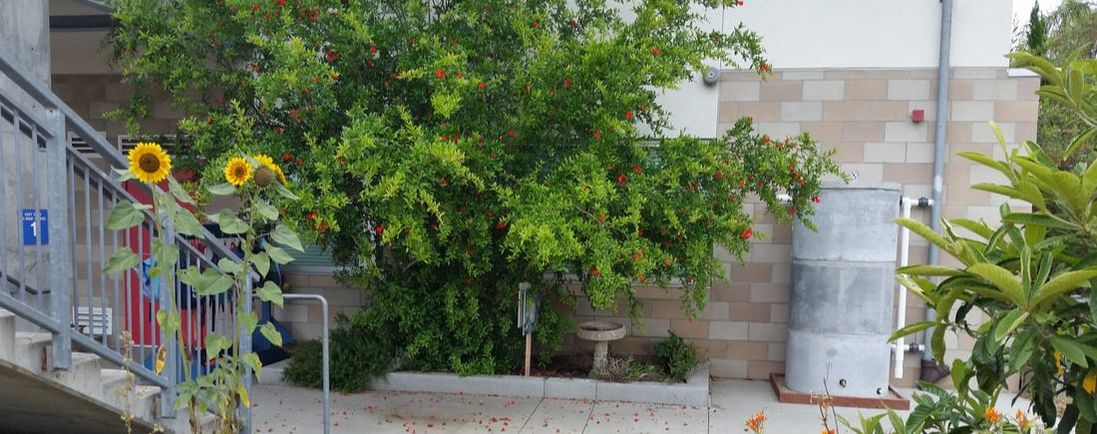The pomegranate is a neat, rounded shrub or small tree that can grow 20 or 30 ft., but more often 12 to 16 ft. tall. There are also dwarf varieties. It is usually deciduous, but in certain areas the leaves will stay on the tree. Pomegranates are long-lived with specimens in Europe that are known to be over 200 years of age! They can be pruned into trees but will try to grow more like bushes by sending out lots of suckers from the base.
There are over 500 named pomegranate cultivars!
Pomegranates provide healthy doses of vitamin C, vitamin K and folate. The seeds are a rich source of dietary fiber and micronutrients. They can eaten or used in dishes fresh and raw, straight out of the peel and white pulp membrane, or turned into juice, wine, liqueur, sauce, marinade, jam, spices, cooked into an infinite variety of dishes or dried.
To date we have planted the wonderful, parfiaka, kashmir bland, ambrosia, eversweet and evergreen cultivars. They all seem to be doing well. Most are less than 2 years old and have not produced much fruit so it is too soon to say which are producing best. We will give you an update in a year. Some are planted in the food forest and some just out on their own. The ones in the food forest are growing faster but I think that is because of the healthier soil in the food forest.
When thoughtfully placed using permaculture (click to learn more about permaculture and ecological design), pomegranates make a wonderful addition to any food forest or ecosystem. They are so easy to grow, beautiful, provide versatile, tasty and healthy food, shade, organic matter from falling leaves and roots and are easy to chop and drop to build healthy soil. They are also super easy to propagate or can be purchased for pretty cheap in small sizes. A simple to use fruit press can easily get the juice out of pomegranates in case you are not a fan of removing the seeds!
Click here to be directed to our Facebook page





 RSS Feed
RSS Feed